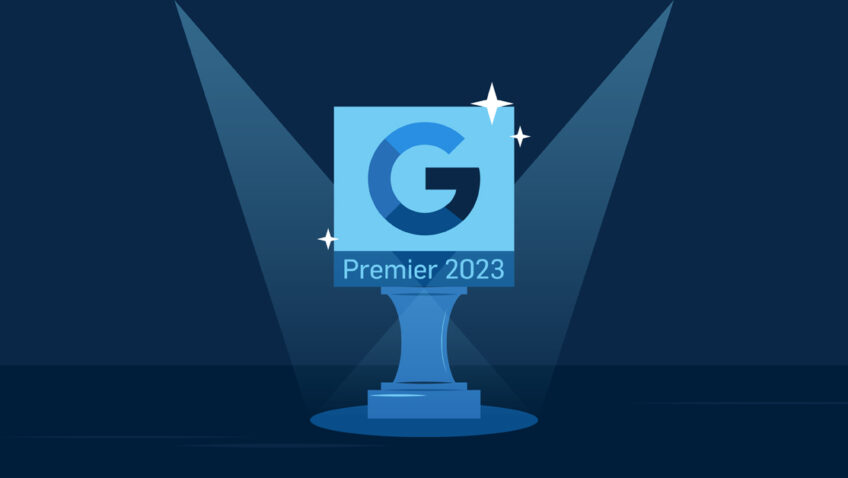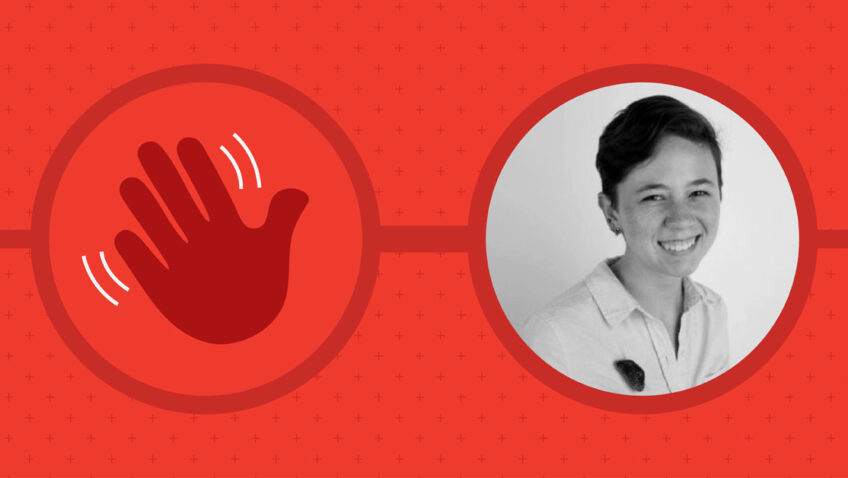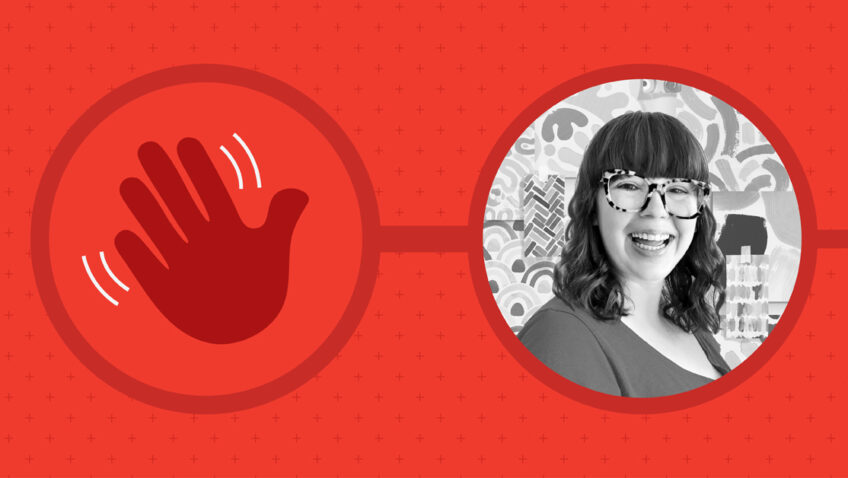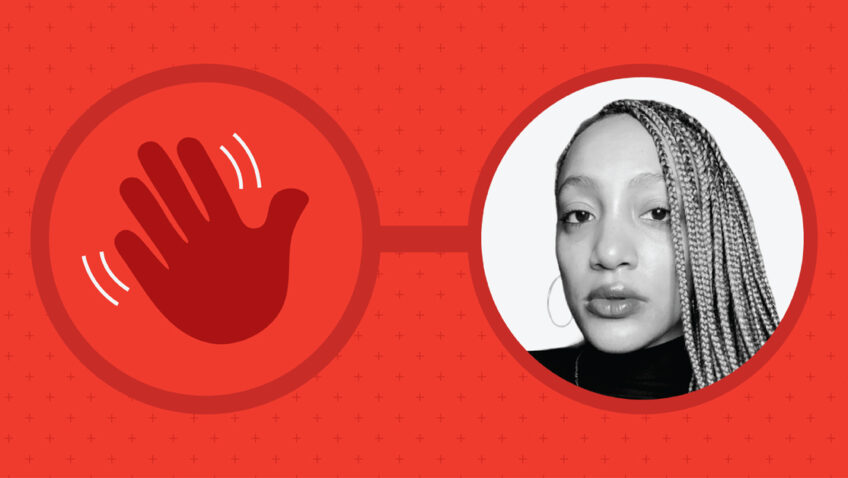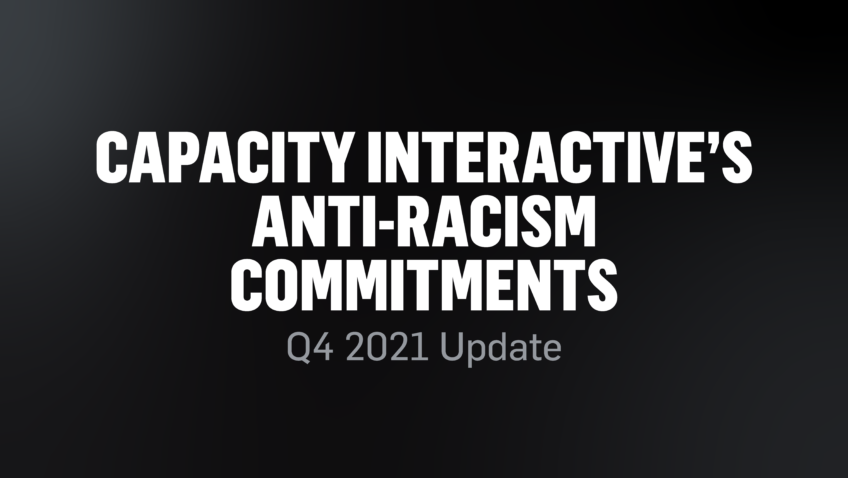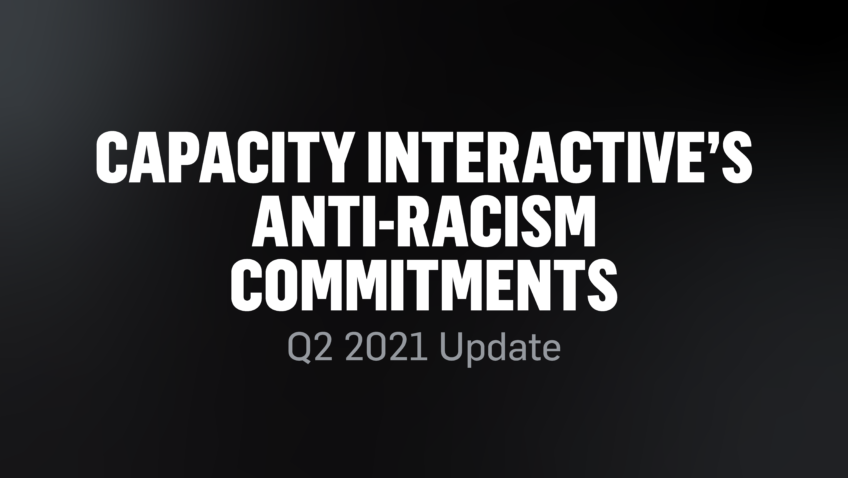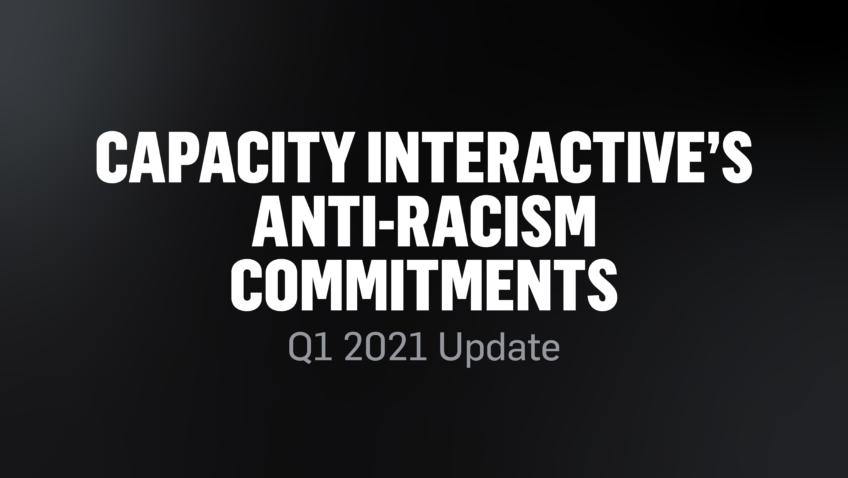Meet Liz Pudel
Hi, CI
Hi, CI! is our monthly series featuring the best team we know – the Capacity Interactive team! You will learn more about the people who help arts organizations market smarter. This month, we’re featuring Liz Pudel, one of our Search Analysts, who is a talented musician, a dad joke connoisseur, and creates innovative search engine marketing copy that captures even the shortest attention spans.
How long have you been at CI?
Including my time as an intern here, I just recently celebrated my year-and-a-half mark!
Where are you from originally?
I’m a New Yorker through and through, born and raised, having spent my formative years at the southern tip of the B-Q line.
How did you discover the CI internship program?
I was a hopeless wanderer pursuing a degree in Sociology and putzing around with a sham of a marching band. I came across a listing for the CI internship while looking for positions in digital marketing. From the moment I laid eyes on the company’s values and the traits that characterized a hireable candidate, I knew that I needed to apply. And the rest is history.
How did you realize you had an interest in search engine marketing (SEM) and search engine optimization (SEO)?
I’d had some exposure to SEO in previous internship environments, but on a basic, WordPress plugin level. I didn’t really understand the breadth and depth of the work until I got to CI, and didn’t have the opportunity to appreciate it. After my first semester interning at CI, I built my knowledge of SEM and SEO from the ground up, and that’s when I got hooked. I realized it’s all about knowing how people behave on their road to purchase. How do you sell a singular experience of a cultural event to people in entirely different parts of their consumer journeys? Who knew a sociology degree was worth something?!
How do you approach SEM analysis? Why do you enjoy this part of your job?
One of my favorite things about SEM is that you’re right where people need you most, and, at the risk of sounding self-important, that’s a big responsibility. For example, when I was in high school, I locked myself and my family out of our apartment. But quick-on-her-feet Liz thought, “I’ll Google it and find a solution.” I clicked on the first result, which was, of course, an ad advertising $19 for any and all locksmith work! What a steal! A steal was right. We ended up paying over $70. Sorry, Mama.
Search ads can often catch people at their most vulnerable moments and when they’re primed to make a decision, whether it be looking for a locksmith or looking for last minute Broadway tickets. That’s why we, as search marketers, need to understand that responsibility and do right by them, lest we forever be condemned to quick-on-her-feet Liz’s grudge list.
We heard you have a super skill: punning in search headlines. Tell us more about this and examples, please!
Punning in search headlines is a collaborative art with the organizations we work with. SEM copy is both an art and science. You have to make your copy compelling while remaining within the character limits. I personally feel that there’s nothing shorter or sweeter than a pun, so if I see one in a client’s copy, you know I’m going to use it.
For example, a theater company was putting on a production of The Importance of Being Earnest, for which the tagline was, It’s about to get Wilde. I don’t know about you, but if I were searching for tickets to see The Importance of Being Earnest, and I was presented with that as opposed to a “Buy Tickets Today” headline, I’d be clicking through while my eyes were still mid-roll.
In your free time, you play classical Spanish guitar. How long have you been playing? What do you love about it?
I’ve been playing classical Spanish guitar for about 8 years, and though it’s the last of the instruments I learned to play, it’s my favorite by FAR. What I love about the classical guitar is the sound and feel of nylon strings. Though we’re all used to the sound of steel strings from our folk, pop, and rock heroes, I love the softness and sensitivity of nylon strings. The sound is typically rounder than that of a steel string guitar, but it also has the potential to be sharp and pointed and bright. And most of all, fingerpicking makes it feel like the music is coming right from your fingertips. Plus, the possibilities are endless! You can play everything from Tarrega to Bach to Classical Gas to Metallica.
How many instruments do you play?
I play three instruments: piano, saxophone (of all shapes, sizes, and ranges), and guitar.
You’re what some would call a dad joke connoisseur. What’s your best dad joke to tell?
Liz: How can you tell that you’ve just heard a dad joke?
CI: Hmmm….we’re not sure. How?
Liz: Well, I think it’s pretty ap-parent!
CI: Wow. So bad, so dad!
Liz: ?
Your top five favorite podcasts – go!
In no particular order:
The New York Times’ The Daily (with a really interesting offshoot called “The Caliphate” that I HIGHLY recommend.) I really enjoy Michael Barbaro’s journalistic style, and I appreciate having the opportunity, on even the busiest of days, to stay up to speed about current events.
The Moth. I can’t tell you the number of times I’ve nearly sobbed or very audibly burst out laughing at my desk while listening to the Moth. If you’re looking to run the gamut of human emotion over the course of an hour, The Moth is your podcast.
Switched On Pop. I have a love-hate relationship with this podcast, but somehow it always manages to draw me back in. The set up sounds almost like the start to a bad joke for musicians: A composer and a musicologist walk into a recording studio. Each episode, they pick one or two songs from popular repertoire (everything from The Cotton-Eyed Joe to Charlie Puth), and they try to understand what about these songs makes them so popular, on a molecular level. Episodes range from incredibly fascinating to unbearably infuriating, but they’re always worth a listen.
Still Processing. As someone who works in the arts, I absolutely LOVE listening to this podcast. It’s hosted by two New York Times culture writers talking about phenomena in art and culture today, be it about music, movies, books, museums, self-care, really anything! It’s always galvanizing to hear someone talk about things I take for granted every day and shine a new light on it. It’s a great reminder of why art of all stripes is so alluring and magical.
CI to Eye. One of the great things about working at CI is that we get to work with people with their boots on the ground in the arts industry, and this podcast is the embodiment of that. I always pride myself on having listened to the episode before the email goes out. Shoutout to Stitcher for being the real MVP.
What’s something about your job that makes you excited to come to work every day?
I know it may seem trite to say, but it’s definitely the people I work with. At any given moment, you can hear people bouncing everything from innovative strategic approaches to exciting evening plans off one another. Everyone brings a fascinating perspective to the table, people fill in each other’s gaps and help with blind spots. It’s always fun coming to work when you know the energy and passion are going to be so vivacious and palpable.
What’s one tip you can give to help arts organizations market smarter?
There’s one episode of the CI to Eye podcast where Erik speaks to Jack McAuliffe about the Audience Churn Study, and they talk about, among other things, the importance of understanding how to retain patrons in a segmented, personalized way. One of the examples that really stuck with me was, for first-time subscribers, the New York Philharmonic taped letters to their seats signed by one of the musicians, personalized for them, thanking them for subscribing. This might seem like a small gesture, but people felt connected to “their” musicians, and they felt like their investment had not gone unnoticed. You have to nurture your audiences the way you nurture your art. As artists, we understand our art, we engage with it on a personal level, and we treat it with the deference of familiarity. We have to do the same with our audiences. Come to understand and engage with them on a personal level, and establish a bond with them that keeps them engaged and coming back for more.



